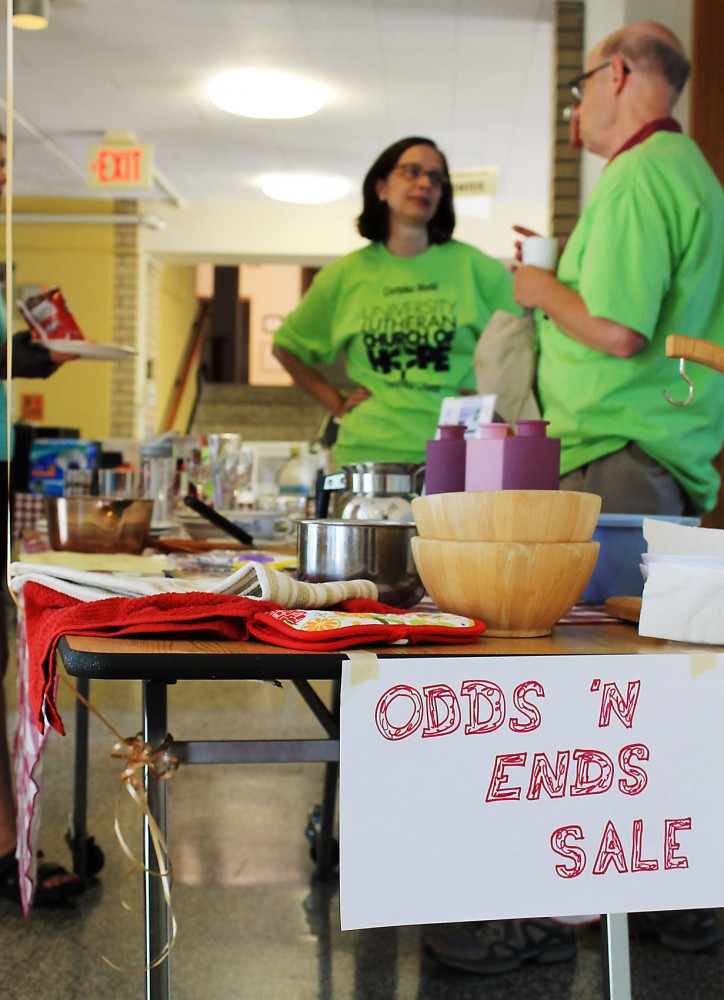Empty boxes, unwanted furniture and garbage piled up on the curbs of University of Minnesota neighborhoods this weekend as students made the move to new homes.
Moving out creates issues for students and neighborhoods like mounds of trash, displaced students between leases and stolen belongings.
There are programs to help alleviate the waste, but Cordelia Pierson, President of the Marcy-Holmes Neighborhood Organization, said the amount of garbage is still “appalling.”
As part of regular trash removal service, residents can leave two large items for pickup.
Sports management junior Laura Silberman and her roommates donated some of their unwanted belongings to a local charity, while leaving the rest in neighboring dumpsters or on the curb.
Like many students whose leases don’t end and start on the same day, Silberman had to find a place to stay for the nights in between.
Silberman moved out of her Dinkytown home Friday afternoon and couldn’t move in to her new place until Sunday. She was able to spend the interim nights at a friend’s house in West St. Paul, Silberman said, and kept many of her belongings in a rented trailer her landlord let her park at her new place.
Trash left on curbs can cause other problems for residents, like having their belongings stolen.
While moving in, architecture junior Jessica Vetrano said she left a mattress on her porch overnight and awoke to find it stolen. The next day, she asked a neighbor if she could take an office chair from a pile on the curb, because she was “lacking in furniture.”
“It’s karma,” she said.
Neighborhood and city officials have urged residents to reduce their impact on the city and environment by seeking more responsible means of disposal, but some residents question the effectiveness of their efforts.
Pierson said she encourages students to recognize all of the reuse opportunities available for things they don’t need anymore, because the trash is a “huge burden” on the community.
“There are many opportunities for people to look at the things they don’t need as somebody else’s asset,” she said, “and to really think about not leaving waste in their wake.”
One program is the Pack and Give Back initiative, a joint effort between the City of Minneapolis, nonprofits and the University. The program is aimed at reducing the amount of reusable items sent to landfills.
The program accepts unwanted items of up to 200 pounds and sends them to local charities, as well as the University’s ReUse Program warehouse. Pack and Give Back has collected nearly 60,000 pounds of items since launching in May.
Ricardo McCurley, neighborhood coordinator for the Southeast Como Improvement Association, said move-out and trash issues are “the symptom of a larger problem,” which results from a lack of communication between landlords and tenants and not enough tenant education about their rights and responsibilities.
The University Student Legal Service and other organizations provide workshops and information on tenant rights to students, but McCurley said he’d like to see more visibility for these programs.
Though he supports the Pack and Give Back program, McCurley said he thinks it could be more effective.
The ReUse center has a store that offers many collected items for little or no cost, which is open every Thursday. Similar programs popped up at community centers across the city this week, like the one held at Hope Church on Saturday, to help alleviate move-out waste.
Lauren White, a graduate student studying ecology and ocean behavior, visited the ReUse warehouse last Thursday. White recently moved here from Virginia and was looking for furniture for her new home.
“It’s cool,” she said. “There’s a lot of stuff to pick from and reasonable prices. … I think it’s great that they’re able to reuse stuff and keep it from going to the landfill.”


